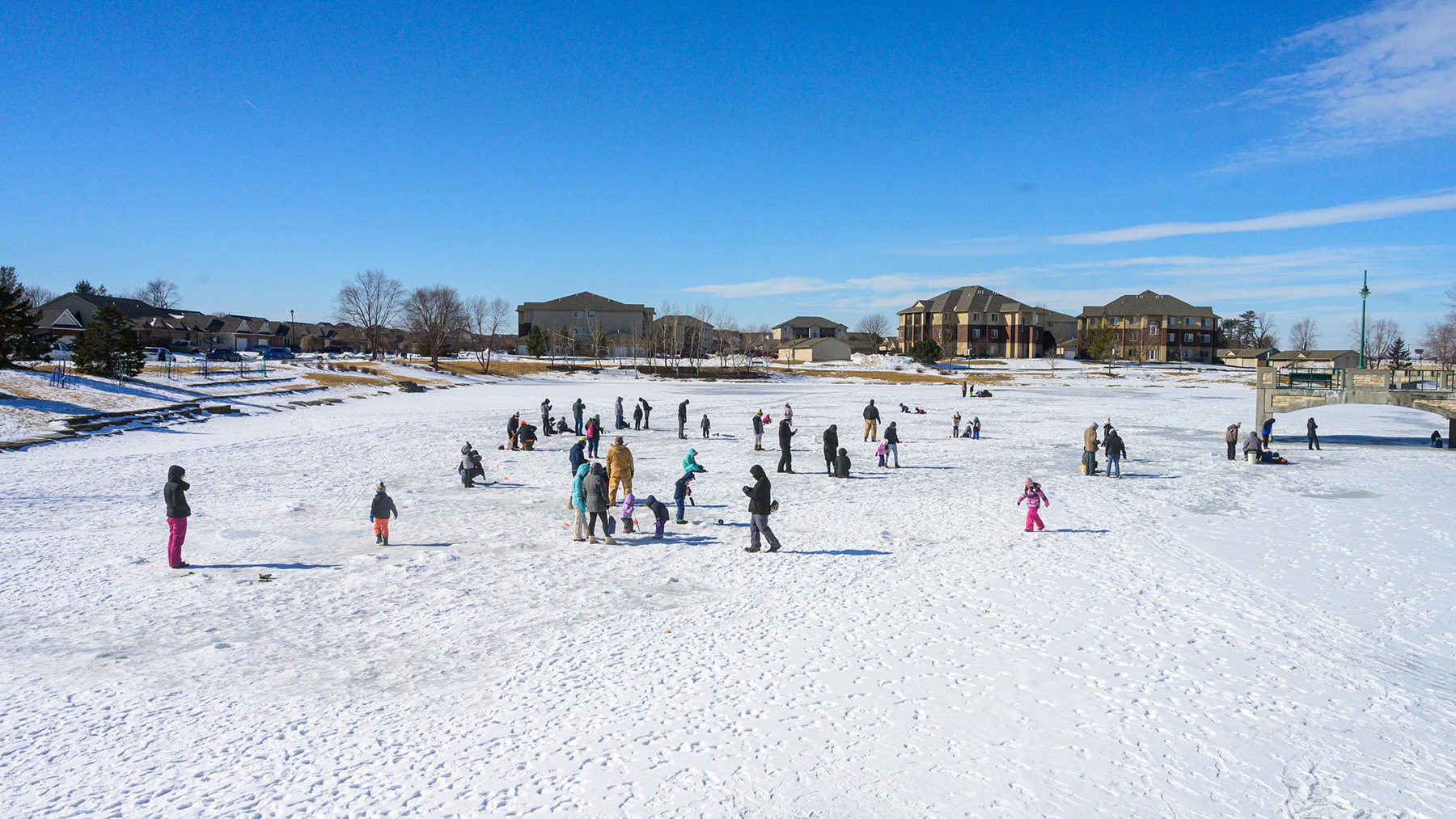
North Liberty permits fishing on our public ponds, but before you hit one of our local ponds to do some ice fishing, and the North Liberty Fire Department would like to remind all of our outdoor ice enthusiasts that ice is never 100 percent safe and offer tips to protect yourself on the ice.
Most importantly, keep young children off the ice without adult supervision at all times. Children are unable to recognize the dangers associated with ice and our unable to provide self-rescue.
Take advantage of what ice fishing opportunities exist around North Liberty, but plan and prepare accordingly to make your ice fishing experience the safest one possible.
If you want to learn more about ice fishing, join the Recreation Department and Take a Kid Outdoors from 11 a.m. to 1 p.m. on Feb. 4, 2023, at Liberty Centre.
Confirm Ice is 4 Inches Thick
Several factors affect the strength of ice including temperature, snow cover, water currents, springs, how fast or slow the water froze and number of days below freezing. You can’t judge ice conditions just by appearance or thickness. Newly formed ice is usually stronger than old ice which has thawed and refrozen and is particularly dangerous later in the winter as the air temperature gets warmed and the angle of the sun gets higher in the sky. Avoid areas with large cracks, depressions or pressure ridges.
Ice is seldom the same thickness across the entire body of water and should be measured at least every 150 feet. To check the ice thickness, take a cordless drill and measure 4 inches from the tip of a ⅝-inch wood drill bit and place a piece of tape on the drill bit at this mark. Drill into the ice and if no water comes through the hole you just drilled, you know the ice is at least 4 inches thick and capable of being withstanding foot traffic. Confirm the thickness by using a tape measure and hook the bottom edge of the ice to measure correctly.
Safety is Your Responsibility
Have a survival plan which includes:
- Ice fishing with a partner.
- Notifying family friends of your exact location and how long you will be at that location.
- Having a cell phone easily accessible in an upper chest pocket.
- Have a life jacket or other throwable life preserver with rope handy and accessible.
- Carry ice rescue claws.
Don’t Panic in an Emergency
Should you fall through the ice have, do not panic! This may be easier said than done. The cold shock response happens within the first 2 to 3 minutes with gasping, hyperventilation and panic. Here are some steps to be prepared in the event you or someone else falls through the ice:
- Don’t remove your winter clothing. Your clothing can trap air and provide warmth and floatation.
- Turn toward the direction you came which is probably the strongest ice.
- Place your hands and arms on the unbroken surface. This is where the ice rescue claws or sharpened screw drivers used as ice picks come in handy.
- Kick your feet and dig in your ice picks to work your way back up on the ice shelf.
- Lie flat on the ice once you are out and roll away from the hole.
- Get to warm dry, dry, shelter area and re-warm yourself immediately.
- Call 911 for help as cold blood trapped in your extremities can come rushing back to your heart and can cause ventricular fibrillation leasing to a heart attack and death.
If you witness someone fall through the ice, call 911 immediately. Resist the urge to run to the edge of the hole which will most likely result in two victims in the water. Never risk your own life to save a pet or other wildlife. Follow this saying: Preach, Reach, Throw, Row, Go.
Preach: Shout to the victim from shore and encourage them to fight to survive and reassure them help is on the way. Try to stay calm and positive.
Reach: If you can safely reach the victim from shore, extend an object like a rope, ladder of jumper cables to the victim. Don’t get pulled in.
Throw: Toss one end of a rope or something which will float to the victim.
Row: Find a light board or canoe and push it out ahead of you. Push it to the edge of the hole, get into the boat and pull the victim in over the bow. Attach a rope to the boat if possible.
Go: A non-professional without the proper safety equipment should not go out on the ice to perform a rescue unless all the basic rescue techniques have been ruled out.
Original source can be found here.





 Alerts Sign-up
Alerts Sign-up